Penguins
Learn about the 18 penguin species and explore the life of a penguin with hands-on activities.
Goal
Explore what makes a penguin unique and compare/contrast them with other bird species. Take a look at how penguins' bodies and behaviors are adapted for their unique life both on land and in the ocean.
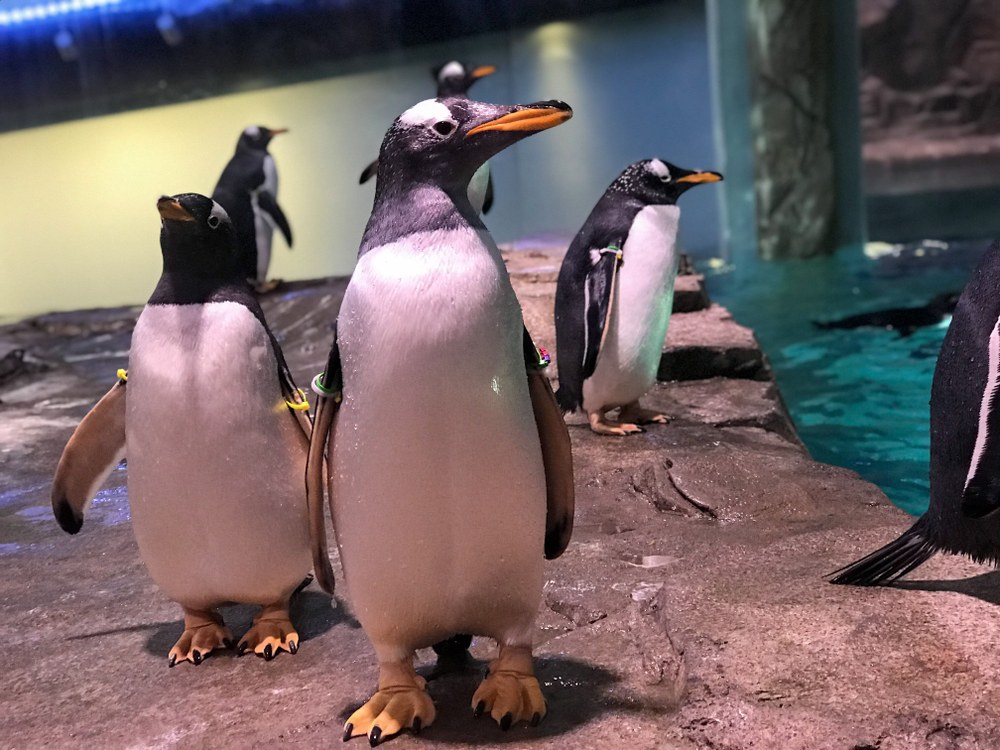
Introduction to Animal
There are a number of birds that can’t fly, but only a few that can soar through the water like the ever-popular penguin! Today we will be diving deep into the world of penguins, a unique bird with 18 different species. Penguins might not be capable of flight, but they still share similar behaviors and characteristics with flighted birds such as having feathers, laying eggs, building nests and mating for life. While penguins' “wings” or flippers are designed for movement in the water, they are still used to direct their movements the same way flighted birds use their wings in the air; to guide their movement/direction and increase or decrease their speed. One characteristic that separates penguins from all other birds is that they are the only aquatic bird that also does not fly. Aquatic birds like ducks, cormorants, seagulls and even flamingos can all fly. Other birds that cannot fly like ostriches, emus, kiwis, and cassowary, do not go in the water at all.
The 18 penguin species live in both cold and warm habitats. All penguins live in the southern hemisphere with just one species located near the equator. Even though their habitats might be different, all penguins spend the majority of their life in water. Penguins can even sleep on the surface of the water so they don’t need to return to land to catch some shut eye. The main reason penguins spend time on land is so they can mate, lay eggs and raise their young. Some penguins live in snow and ice, but many others live on warm beaches and islands in South America and Africa.
Penguins at the ABQ BioPark
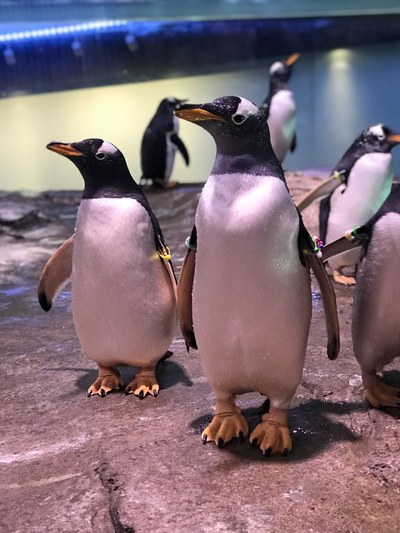
The BioPark is home to three penguin species: gentoo, macaroni and king, which are all accustomed to colder temperatures. Their specially designed habitat keeps them cool all year long, and when you visit you might get a little chilly yourself. Our facility is important for penguin conservation because it is the only place in New Mexico where people can come to see real penguins. The BioPark's goal is to educate and inspire people in order to protect species in the wild, and helping people get an up-close look at these animals and learn about them is the first step in the process.
All of the penguins at the BioPark have come to us from different Association of Zoos and Aquariums (AZA) accredited zoos and aquariums. As an accredited facility, we have high standards of care for our animals and work with other AZA organizations to provide all of our animals with the best care possible. This happens through a conservation program called the Species Survival Plan (SSP). SSPs help captive animal populations in AZA facilities maintain genetic diversity. The penguins at the BioPark last lived at facilities in California and Florida, but will spend this next stage of their lives in New Mexico with us.
Animal keepers feed these penguins huge amounts of fish every day and work tirelessly to keep the penguins lives enriched. We make our own snow and ice for the penguins, and their exhibit is cold enough that our penguin keepers have to dress for winter all year round! The penguin exhibit is specifically designed to provide the best possible life for the penguins who live there, as it has both water and land integrated. Our penguins have lots of space to waddle and swim inside of their habitat. All animals at the BioPark are also target-trained to go to a specific place so they can be fed and participate in routine veterinary care to make sure they are healthy. Penguins are also very social animals so that is why we have a large colony of birds (31 in total), making for a lively environment.
Penguin Conservation
Every time you visit the BioPark, part of your entrance fee goes towards conservation, so you are supporting conservation efforts that way. You can also teach and share your knowledge about penguins. In the 19th century, penguins were hunted for their skin, fat, meat and feathers. Today, penguins are protected in most countries. However, populations everywhere have decreased because of human impacts such as habitat disturbance, pollution on land and in water, and climate change. Five penguin species are considered endangered, five are considered vulnerable, and three are considered near-threatened by the International Union for Conservation of Nature (IUCN).
You can help penguins and all animals by limiting your “carbon footprint.” All this means is reducing the impact you have on the environment when you can whether that be by biking instead of driving, working from home, eating vegetarian occasionally, reducing the amount of food you buy with plastic/packaging or starting a home garden. When we as society collectively reduce our carbon “footprints” even by just a little per person, the results are strong, creating cleaner air, water, soil and less drastic changes in the climate worldwide. This helps penguins because drastic changes in ocean temperatures have reduced plankton/krill populations, making it harder for penguins and creatures like baleen whales to get a meal.
Experiments
Become a Penguin
- Shut your eyes and take a deep breath in through your nose. After exhaling all the way, open your eyes and begin your new life as a penguin.
- Your arms are now long flippers like a penguin.
- Your feet are short and webbed.
- And, you have a beak on your face instead of a mouth.
- Move your “flippers” or arms the way you imagine a penguin diving and soaring through the water would. What would speed you up? What would slow you down? How could you maneuver around an obstacle or catch prey? How do you imagine moving through water might be different than moving through air
- Practice “waddling” or walking like a penguin by walking with your feet close together, possibly even tying them together. What could your webbed penguin feet be good for? How is the job of your long flippers different from the job of your short webbed feet? How are both needed/useful?
- Open and close your “penguin beak” or mouth and pretend you are snapping shut on a prey animal.
Beak Exploration
- Pick one of your favorite types of food to eat.
- Imagine that for every day for the rest of your life you will primarily eat that type of food. What type of mouth/beak would be the most useful?
- How does your mouth help you eat different things?
- If all humans only ate soup do you think our mouths (lips, tongues, teeth) would look any different?
- How about if we ate only spaghetti? Or only beef-jerky?
All species of penguin have differently shaped beaks so they can eat the different types of prey species they find in the ocean like krill, fish, squid, crustaceans like crabs, and tiny animals found under sea-ice called amphipods. Penguins also have small barbs or spikes on their tongues, which help to stop prey from slipping away! Stick out your tongue and imagine it is sharp and full of barbs instead of soft and flexible like our human tongues are. How could this be useful for a penguin?
If you enjoyed the beak exploration above try out additional bird beak activities.
Build a Nest
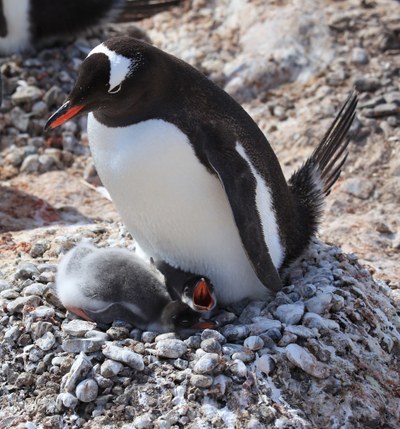
- Collect your supplies
Materials
- Stones, sticks, or soil/sand
For our activity, you must collect all the stones you can and build your pile as large as possible just like a penguin would! Alternatively you could dig in mud/sand and build your own penguin burrow, or collect sticks and build a nest the way many New Mexico native animals will do.
- What materials did you use?
- How are those materials similar or different?
- Were there enough materials close-by to build a nest quickly and easily?
- Do you think penguins ever have trouble building their nests or finding enough materials?
- Did you have any friends that helped you build your nest? Penguins will usually couple up in pairs of two and work together both in building the nest and in caring for the young.
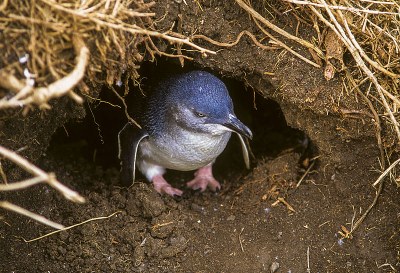
Keep your egg safe
Materials
- Pair of socks/tennis ball/anything to be your “egg”
Steps
- Carry an “egg” between your feet to keep it warm. Use a balled up pair of socks, tennis ball, or any other item you want to pretend is your egg. An extra challenge would be to try with a real egg! Keep the egg held between your feet above the ground as you slowly make your way to the safety of the nest.
- One key practice for penguins living in cold places is the ability to shift the egg from one penguin to the next quickly so it does not freeze after being exposed to the wind and ice. Try shifting your egg from the feet of one “penguin” to the other quickly yet carefully!
- Was it easy to transport your egg?
- What problems might penguins face when trying to build nests or care for their eggs?
- What can we humans do to help?
If you ever see a nest or baby bird on the ground do you know what to do? The vast majority of the time it is actually best to do nothing and leave the bird/nest alone. By educating others about this, you can help. Wildlife agencies often get calls from people who have "rescued" baby birds that actually did not need rescuing! Most of the time if the bird has feathers it is simply practicing and learning to fly. If you want to find out more check, out the link below:
Found a baby bird or bird's nest? Here's what to do.
Additional Resources
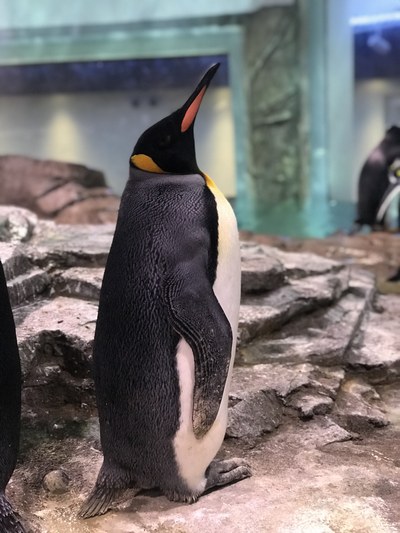
We hope you enjoyed exploring the world of penguins with us today, and learning some ways to help both penguins and native bird species. If you are interested in learning more, please look at the additional resources below:
- Make penguin observations using the live-cam at the San Diego Zoo!
- Carbon Footprints - for kids!
- Calculate Your Footprint
Thank you for supporting your ABQ BioPark!
